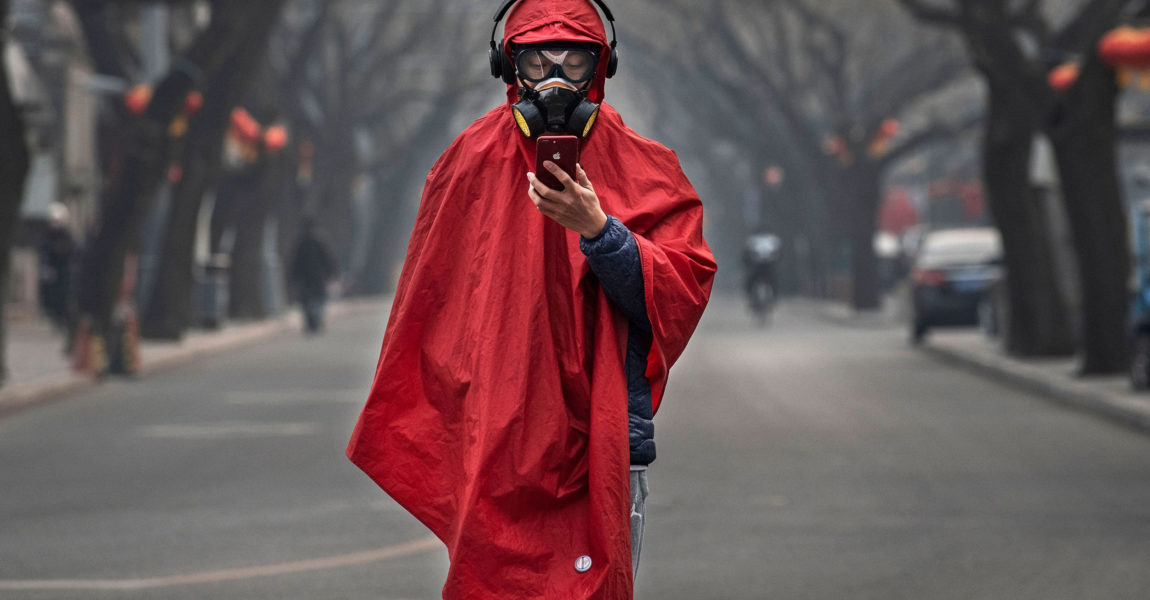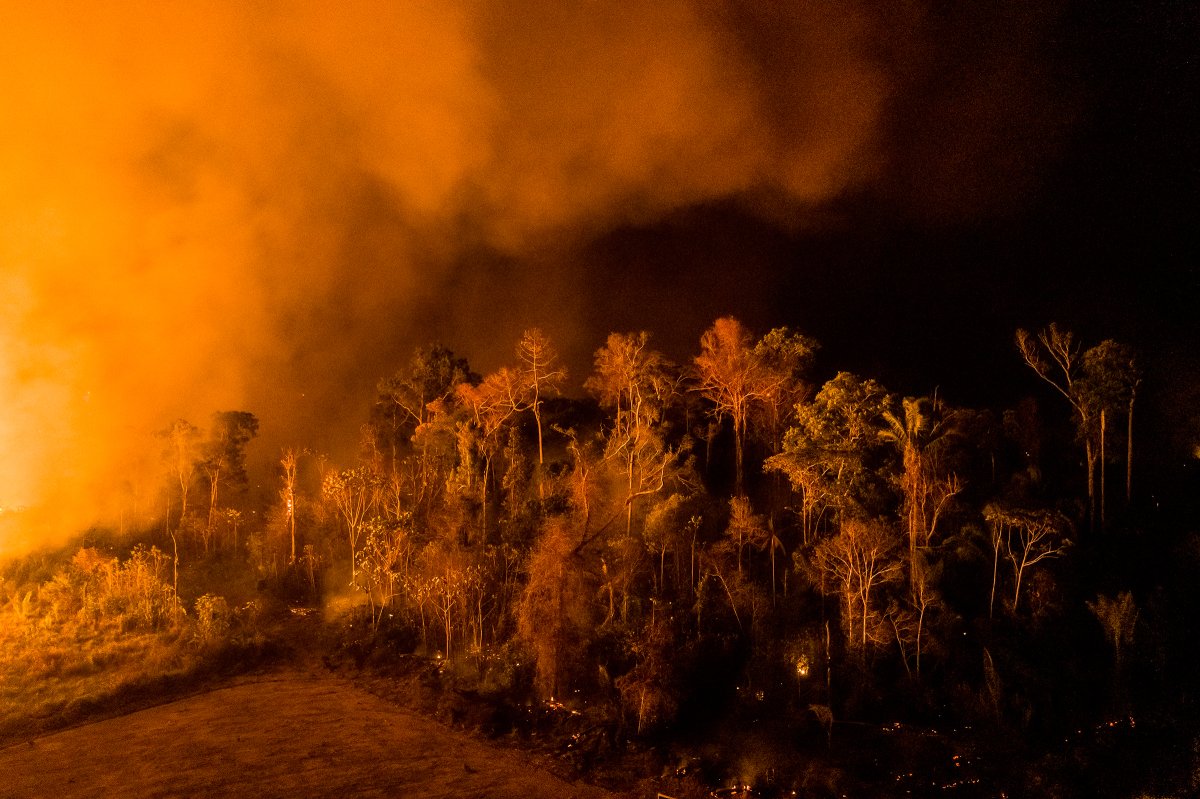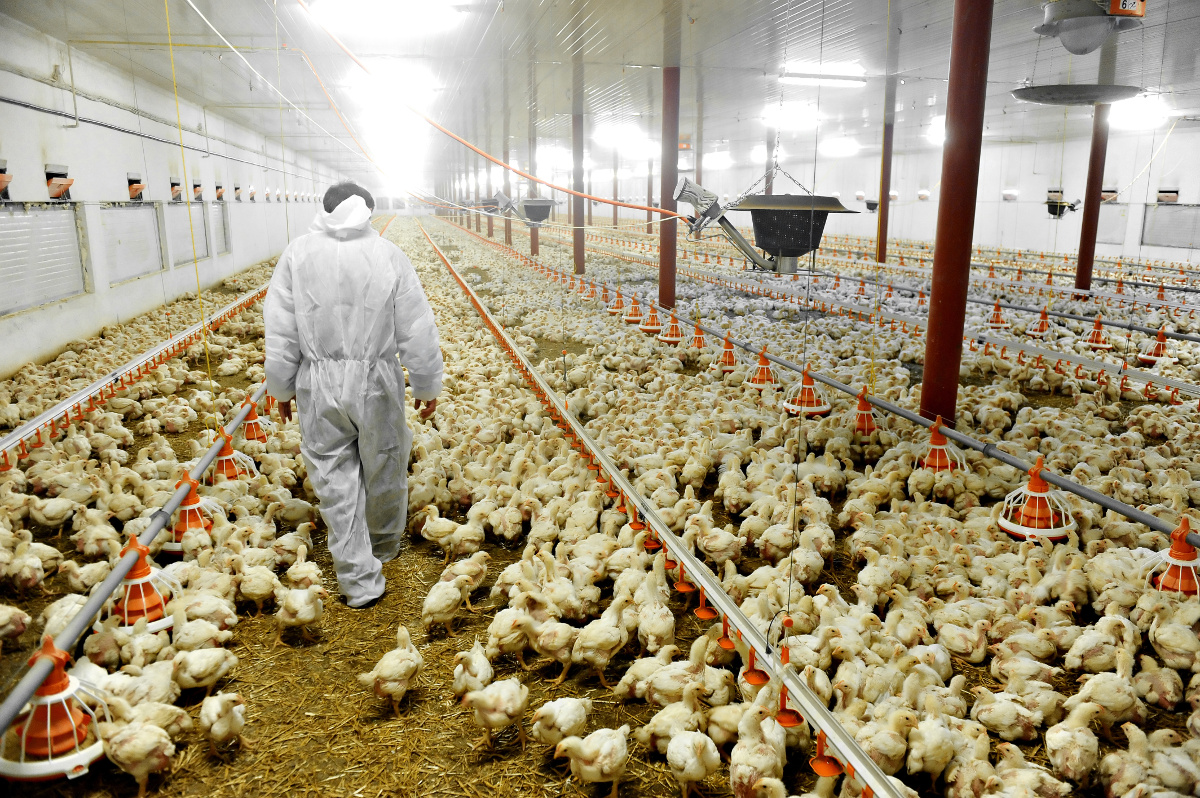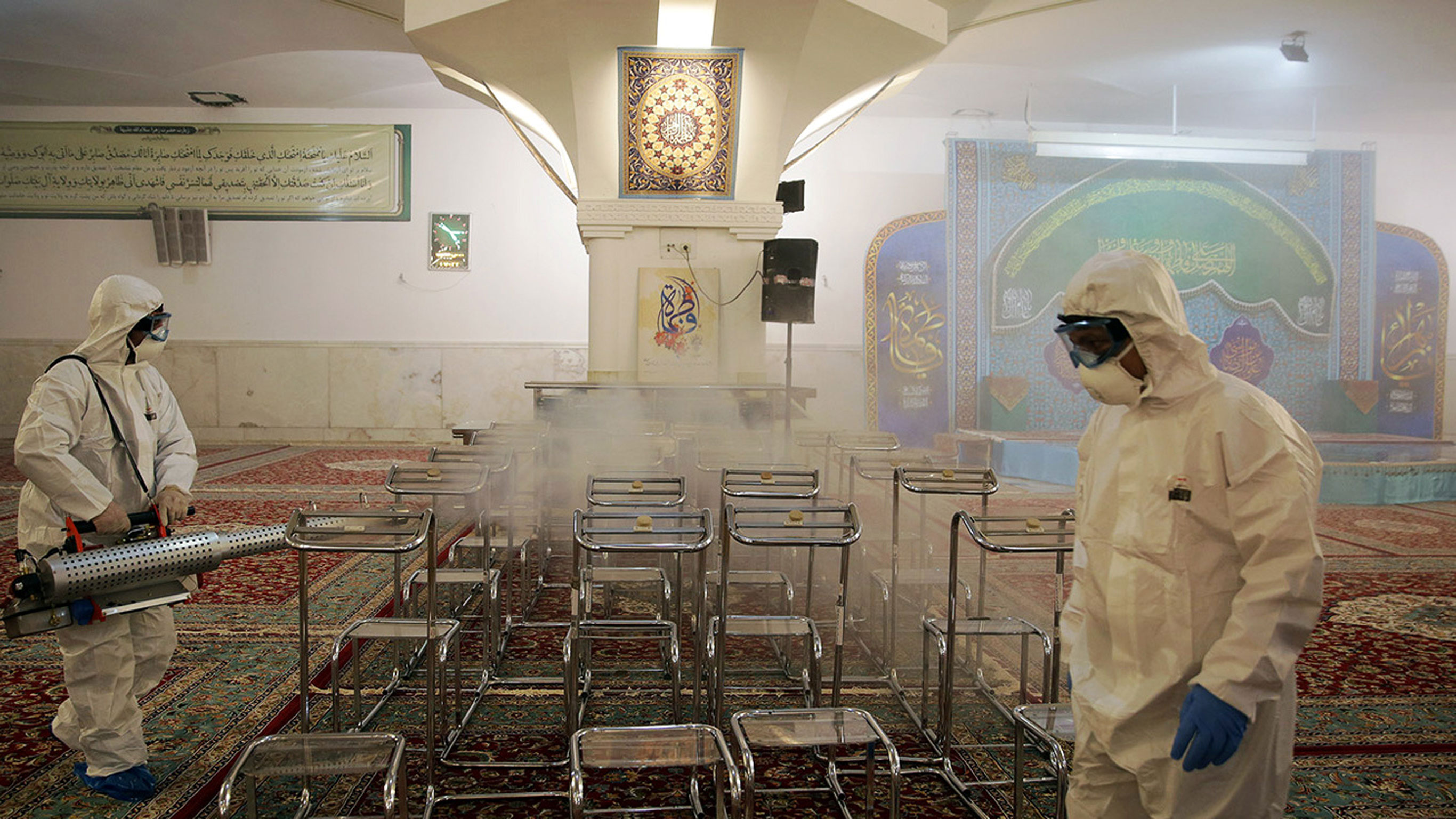
The culprit for COVID-19 is not the pangolin, but the environmental degradation
Probably it’s time to wonder why nowadays the pandemics come one after another on a racing pace. Could we describe the coronavirus pandemic as “the revenge of the pangolins” or there’s something deeper in it that we should concentrate on? And on top of this, in spite of the eminent danger being spotted long ago, including the specific conditions leading to it (given our rich scientific experience on previous pandemic phenomena), why did global governments decide to take just a handful of small actions in order to face it?
Τhe capitalist need for profit ravages nature
The activities of constant deforestation, systematic destruction of many wildlife natural habitats, land clearance, unlimited agricultural development as well as of frenzy urbanisation processes which have brought people and agricultural lands close to wildlife, force the animals to abandon their habitats. As a result, the chances of close and repeated contact of humans with animals increase; this allows some bacteria and viruses, which can be found naturally on animals, to enter the human body. Some of them are known for causing a series of infections.
However, it’s obvious that microorganisms are not necessarily deadly or even harmful; instead, in their majority, they’re necessary for the natural environmental balance of the planet, since they hold some essential functions for the ecosystems, even for the human body.
The main problem occurs when, due to relentless capitalist development, ecosystems are partially or totally destroyed, and the species are forced to move to new lands. It’s already known that biodiversity is severely threatened, and almost 1 million species are in danger of becoming extinct because of climate change or environmental pollution.

“We invade the rainforests and other wildlife habitats, which host so many species of flora and fauna. And among these species, so many unknown viruses. We cut the trees, we kill the animals or we capture them and send them for market sale. We derange the ecosystems, and therefore the natural hosts of the viruses are lost, and when this happens, viruses are in need of a new host; this host is frequently the human…” recently says David Quammen, writer of the book “Spillover: Animal Infections and the Next Human Pandemic”.
In 2008, a study was published in Nature, which contributed to the recognition of 335 diseases appearing in the public eye between 1940 and 2004, 60% of which come from animals. When completing their project, researchers warned that animal diseases coming from wildlife, are actually the most significant danger for public health, when compared to other newly-appeared contagious illnesses. They concluded that the limitation of economic activities in areas rich in wildlife can importantly reduce the chances of those diseases being transmitted to humans.
More and more of those diseases seem to be linked to environmental changes, driven by the economic exploitation of nature; behind of all this, one can find mainly commercial or industrial networks, managed by multinational entreprises. The derangement of the natural balance of rainforests for example, caused by logging, mining, construction of roads, urbanisation and consequent rise of population, brings humans to closer contact with animals, from which they were isolated in the past years. As forests disappear and villages, cities and industries expand, new paths open for the adaptation of animal disease-causing microorganisms to the human body. While wildlife keeps being under the pressure of exploitation, those microorganisms break the “species barrier” and are transmitted from one species to another. Characteristically, animals which have been known for the transmission of diseases to humans, like rodents and bats, have a big capability of survival in new ecosystems, if their initial ecosystem has been deranged or destroyed.
In the meanwhile, it’s important to notice that the increasing cases of viruses being transmitted to humans, are closely connected to the modern food production techniques under industrialised, profit-based, agriculture. Nowadays, meat industry involves the mass crowding and congestion of huge numbers of animals in the worst conditions, animals which are then also used for genetic monocultures. Those conditions are an ideal lab for the mutation of potential pathogens into more dangerous forms (e.g. swine flu, H1N1, etc). It’s broadly known that bigger-size and bigger-density populations favour higher chances of transmission. At the same time, profit-oriented agriculture forces farmers to abandon the traditional, more natural and ecologically-wise methods of land farming, offering as a result, the perfect means for pathogen mutation.

Nowadays, industrialised farming and agriculture, as well as the big capitalist companies of food industry, focus on their profits so much that the risk of a virus killing a billion of people is perceived merely as a calculated risk, worth to take. The imminent consequence is that isolated pathogens invade animal farms and then they migrate to human communities.
Covid-19: the most recent link in the chain
Mainly, something similar happened in China. Hubei Province, the initial hotspot of the pandemic, extends along Yangtse Valley, where one of the greatest projects of human intervention in the natural environment took place. It’s the Three Gorges Dam; for its construction, more than 2000 villages were abandoned and almost 1,6 million people were forced to move away. This directly caused a huge change in the natural landscape, combined with the destruction of numerous ecosystems.
One of the repercussions of the construction was that the bats were forced to abandon their natural habitats in the forests and mountain caves, which compelled them to seek new habitats and as a result to interact with other species. Bats are mammals, with a very strong immune system; and almost any organism passing through their bodies may later be transmitted to other animals. Therefore, it’s quite easy for someone to imagine what could happen next: a human swallows bat saliva when biting a contaminated fruit, or, while trying to catch and kill this unwanted animal visitor, he gets exposed to bacteria or viruses living on its skin. This is the way a large number of viruses, of whom bats are hosts (without any harmful effects on them), manage to reach and infect human populations.
Based on the most recent data, SARS-CoV-2 was initially transmitted to humans from some wild animal. The scientific community has not yet concluded whether it originated from bats, the pangolin (an endagered species of anteaters, which is considered a delicacy in China), a reptile, or even a combination of them via some other intermediate host. However, undoubtedly, we shouldn’t blame animals if an infectious and potentially deadly for humans, virus emerged from them. The main culprit for the transmission and spreading of the virus, as well as for its harmful consequences for public health, is no other than the current socio-economic model and the greedy nature of capitalism, that disregards any potential risks in order to seek and maximise profit.
What if it escaped from some lab?
A plethora of genetic and molecular data comes to confirm the theories which blame the human intervention to the natural environment as the main responsible factor for the more and more frequent appearance of new, deadly viruses, rather than some random conspiracy theories.
Even if we’re still in the very beginning, studies in the fields of molecular biology, biotechnology and genetic engineering give us an abundance of information that strengthens the previous position. On 17/3/2020, a group of scientists, headed by Dr. Andersen, announced two possible transmission paths of the virus, from animals to humans, thus obliterating the possibility of a human-made virus, as many conspiracists claim.
The scientists, in order to pinpoint the origin of the new virus, compared the genetic sequence of SARS-CoV-2 with genetic sequences of other similar coronaviruses, in an effort to recognise parts of RNA which are common or different among them. Simultaneously, they checked if there were any signs that the virus was designed in a lab. Therefore, when analysing the mutations in the protein sequences, which the virus uses to cling upon and invade a human cell, their result was that this protein is rather a product of natural selection than of genetic engineering. This result was further confirmed through meticulous studying of the viral molecular structure; the researchers say that if someone wanted to design and construct a deadly virus piece-to-piece, he would have to use the structure (or at least parts of it) of an already known infectious coronavirus. However, after the comparison of the sequences based on various genetic data, the study concluded that SARS-CoV-2 is considerably different than the other six coronaviruses, which are known to infect humans, and therefore, there is absolutely no data supporting that it was created by humans in a lab rather than natural selection.

Nature had warned us
“There is no crime, that the capital is unwilling to commit in order to make profit”, Marx said. After all, human history was always a history of epidemics and pandemics. Plague, cholera, typhus, tuberculosis, left their imprint on history by affecting severely the turn of humanity’s event horizon. The case of Ebola virus shows this clearly. A recent study revealed that this virus’ hotspots, whose origin is attributed to various bat species, were more frequent in areas of Western and Central Africa, which had recently undergone deforestation. Following a similar pattern, the fruit-eating bats spread the Nipah virus to home grown pig farms in Malaysia in 1999 and afterwards, the virus infected humans, causing tenths of deaths. In addition, in Brazil, it’s already known that deforestation activities in Amazon rainforest affecting a 4% of its total size, increased malaria cases by 50%. The emergence of Ebola, SARS-CoV, and now of SARS-CoV-2, has thus been linked to wildlife.
These alarming trends will keep getting even more common, as environmental degradation continues and as the devastating ecological footprint of capitalist development keeps reaching remote wildlife habitats and bringing these animals closer to urban centers. And they are mostly the kind of animals typically found in illegal commercial routes, or even sold at livestock market places; over there, animal species which would be permanently remote from each other in natural conditions, are found crowded in small cages, facilitating thus the propagation of pathogens from one organism to another.
Another important side that should be noted, is the inhuman aspect of modern livestock agricultural sector/meat industry. The case of H1N1 (swine flu) is a glowing example. The new strain of H1N1 contained genetic material, belonging to strains that can infect humans, birds and pigs. This probably occured because of certain animal feeds used for quicker animal development and growth. The capitalistic need for acceleration of its own profit accumulation process, creates totally unsanitary conditions in the facilities of meat industry. It jam-packs the spaces with animals, overfeeds them, controls their life span, the same way it intensifies human labour in a brutal way.
Climate change is here and gives birth to pandemics
A few months ago, the British medical journal the Lancet rang the bell of danger pertaining to the effects of climate change to public health. In one of the reviews, the associated scientists show that the dangers don’t merely concern public health, but the clock is ticking for the whole medical progress humanity has made in the past decades; if climate change is not addressed seriously and gets contained, it might eradicate all medical advances that we’ve known.
WHO agrees on that, and predicts that between 2030 and 2050, climate change will be responsible for extra 250.000 deaths per year – attributed mainly to malaria, malnutrition, diarrhea and thermal shock. “Our health is affected by climate change. Because our lungs, our brain, our cardiovascular system do suffer in a great degree by the conditions leading to climate change, conditions almost identical to those leading to air pollution” claims Maria Neira, director of the Environment, Climate Change and Public Health Department of WHO.
Climate change is known already to be an underlying factor leading to more than 1,4 million premature deaths in Europe (in 53 countries with almost 900 miliion people combined). According to several estimations, until the end of this century, it’s very likely that ⅔ of Europeans will be exposed each year to natural disasters, while the corresponding percentage of them during the years 1981-2010 was only 5%.
An anticapitalist ecology programme for a new communist hope
The coronavirus pandemic proves two things: firstly, that capitalist system destroys both nature and human, and secondly, that environmental degradation is a main issue for the viability of humanity as a species, since it undermines the perspective of its own existence on planet Earth. The relation between human and earth has been deranged for a long time – we could even say that it has some truly antagonistic or hostile aspects. However, is it possible to reverse a situation that seems -for the time being- inevitable?
The antagonistic relation between human and nature is a phenomenon present on a certain point of societal evolution and defined historically by the capitalist relations of production. The birth of the contradicting forces of labour and capital accumulation under the capitalist system is the same condition that defines human-nature relationship. As Marx said, capital destroys the two main sources of societal wealth : nature and labour. Therefore, the ecological matter does not depend solely on human-nature relationship, but also on the relationship of human with labour and its products.
At this point, it’s essential to answer an oxymoron: why, despite the great development of production means and the possibility of a new, well-balanced human-nature co-existence, these technical developments end up having harmful effects to the natural environment? The economic crisis and the inherent reactionary character of late/totalitarian capitalism are held responsible for this type of modern barbarism, as they continue systematically to force human labour even under the levels of its reproduction limit, and to destroy the last natural resources left untouched by human activity.
So, for us, the dilemma of capitalist barbarism/destruction of nature-human vs communist liberation is still relevant nowadays. We should listen to the cry of nature for help! For the future of the younger generations and the working classes, a new path towards a life that’s worth living is needed. For a new communist hope in the 21th century, for a world without exploitation, poverty, alienation and oppression, without wars and natural disasters!
Απρίλης 2020

(1) Kristian G. Andersen, The proximal origin of SARS-CoV-2, Nature Medicine, March 17, 2020
(3) Jim Robbins, The Ecology of Disease, New York Times, New York, July 14, 2012
(6) Sonia Shah, Contre les pandémies, l’écologie, Le Monde Diplomatique, March 17, 2020 Μεταφρασμένο στα ελληνικά εδώ
(6) Katarina Zimmer, Deforestation Tied to Changes in Disease Dynamics, The Scientist, January 29, 2019
(8) Massimo De Angelis, L’ uso politico dei parassiti, Commune Info, March 15, 2020
(10) Wufei Yu, Coronavirus: Revenge of the Pangolins?, The New York Times, March 5, 2020